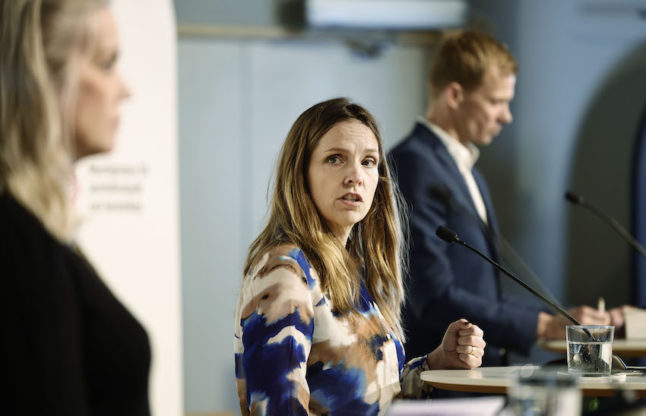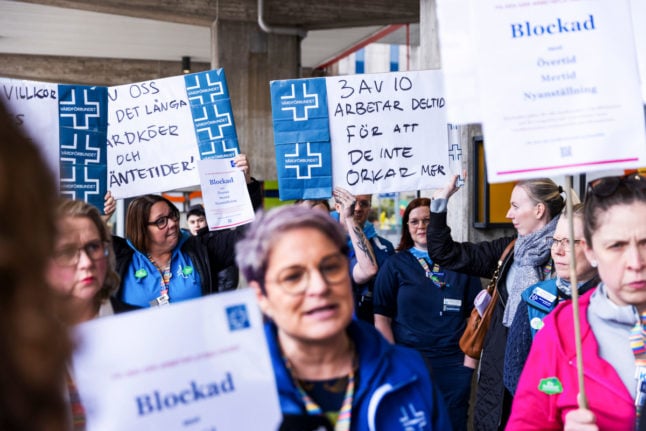In a the higher of the two scenarios published on Tuesday, in which the infection rate increases by 10 percent from current levels, the agency expects over 250 patients would end up being admitted to hospitals across the country each day at the peak of infections in mid-January.
“If we look at the pressure on hospitals from these two scenarios, what we are seeing is that this is in line with how it looked in January and February last year,” Sara Byfors, chief of division at the agency, told the TT newswire.
Around 13 patients of those new patients would be sufficiently ill each day to require admittance to intensive care, a lower number than was the case in 2021 and early 2022, however.
“As the number of infected rises, so does the number of people who need intensive care, but not to the same level as earlier in the pandemic,” Byfors said.
In the graphs below you can see how many people could end up being being treated in hospital and intensive care (IVA) by the peak in mid-January.

The health agency said it had seen “a significant rise in infections over the past two weeks”, at the same time as “a significant spread of both the RS and the influensa viruses”.
While neither the public health agency nor the government were currently planning to bring back infection control measures, it is possible that increased testing and other measures could be brought in to control the spread of infection in some regions and municipalities.
Byfors said that many hospitals faced “a tough situation” over Christmas with a lot of people off on Christmas leave and a lot of personnel off sick.
Three hospitals in Stockholm have already called a “state of readiness”, or stabsläge, as a result of a rise in the number of patients, and hospitals in Gothenburg and northern Sweden are also feeling the strain.
On Tuesday, 630 people were being treated for Covid-19 in hospitals in Stockholm, an increase of 108 in a single week and the highest number since February 8th.
“It’s gone up significantly in the recent weeks, and we also have the RS virus, which is also growing rapidly and is zooming right up. We even have a few influensa patients,” said Johan Bratt, the chief doctor in Region Stockholm.



 Please whitelist us to continue reading.
Please whitelist us to continue reading.
Member comments